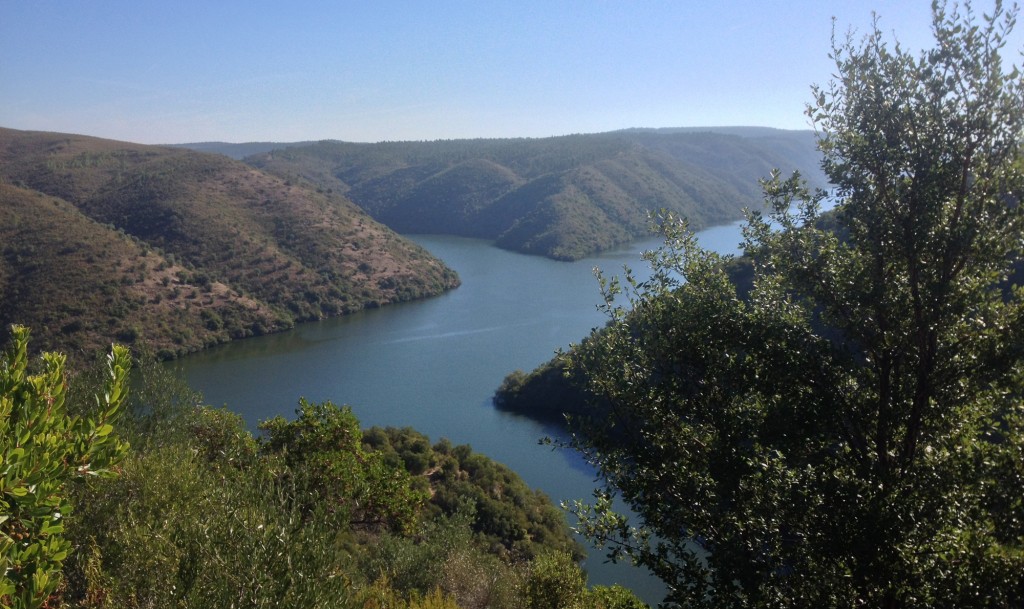The Tagus River: A Timeless Watercourse Weaving Through the Heart of Iberia

The Tagus River, known as Rio Tajo in Spanish and Rio Tejo in Portuguese, stands as a historic and cultural icon in the Iberian Peninsula. Flowing gracefully through Spain and Portugal, this majestic waterway has played a significant role in shaping the landscapes, histories, and cultures of the region for millennia.
Geographical and Historical Significance: The Tagus River originates in the mountains of central Spain, near the village of Frías de Albarracín, and flows westward through the rugged landscapes of the Iberian Peninsula. It passes through major cities such as Toledo and Aranjuez before reaching the border with Portugal, where it continues its course through Lisbon and finally empties into the Atlantic Ocean.
Throughout history, the Tagus has been a vital lifeline for the peoples of Spain and Portugal, serving as a source of water, transportation, and sustenance. In ancient times, it formed the southern boundary of the Roman Empire and witnessed the rise and fall of medieval kingdoms and empires. The riverbanks are dotted with historic cities, castles, and fortresses, each bearing witness to the rich tapestry of Iberian history and civilization.
Cultural and Artistic Legacy: The Tagus has inspired generations of artists, writers, and musicians with its timeless beauty and romantic allure. From the epic poems of Luís de Camões to the haunting melodies of Amália Rodrigues’s “Lisboa Antiga,” the river has been a source of inspiration for countless works of art and literature. Painters such as José de Almada Negreiros and Joaquín Sorolla captured its scenic vistas and vibrant landscapes in their masterpieces, while writers like José Saramago and Miguel de Cervantes chronicled their journeys along its banks in their novels and essays.
The cities and towns along the Tagus are home to a wealth of cultural treasures, from the Moorish fortresses of Toledo and Lisbon to the Gothic cathedrals of Ávila and Tomar. The region’s architectural heritage reflects the diverse influences of Roman, Moorish, and Christian civilizations, creating a unique blend of styles and traditions that is truly emblematic of Iberian culture.
Economic Importance: The Tagus River is not only a cultural icon but also a vital economic artery for Spain and Portugal. Its navigable waters facilitate the transportation of goods and commodities, including grain, wine, and minerals, supporting industries such as agriculture, viticulture, and mining. Ports along the river, such as Lisbon and Toledo, are major hubs for domestic and international trade, handling millions of tons of cargo each year.
The Tagus also plays a crucial role in the region’s tourism industry, attracting millions of visitors each year with its scenic beauty, historic landmarks, and vibrant cultural scene. River cruises offer travelers a leisurely way to explore the river’s many attractions, from the medieval villages of Castilla-La Mancha to the natural wonders of the Tagus Estuary.
Environmental Conservation and Sustainability: In recent years, efforts have been made to protect and preserve the ecological health of the Tagus River and its surrounding habitats. Initiatives to reduce pollution, restore wetlands, and promote sustainable development aim to ensure that future generations can continue to enjoy the river’s natural beauty and resources.
From birdwatching and kayaking along its tranquil waters to hiking and cycling along its scenic riverbanks, the Tagus offers endless opportunities for outdoor recreation and exploration. Whether exploring historic landmarks, sampling local cuisine, or simply soaking in the breathtaking views, visitors to the Tagus region are sure to be captivated by its timeless charm and allure.
Conclusion: In conclusion, the Tagus River stands as a symbol of Iberia’s natural beauty, cultural richness, and historical significance. From its source in the mountains of Spain to its delta in the Atlantic Ocean, the river’s journey reflects the enduring spirit of the Spanish and Portuguese peoples and the timeless rhythms of the natural world. As we navigate the challenges of the 21st century, the Tagus remains a source of inspiration, fascination, and pride for all who encounter its majestic waters.




